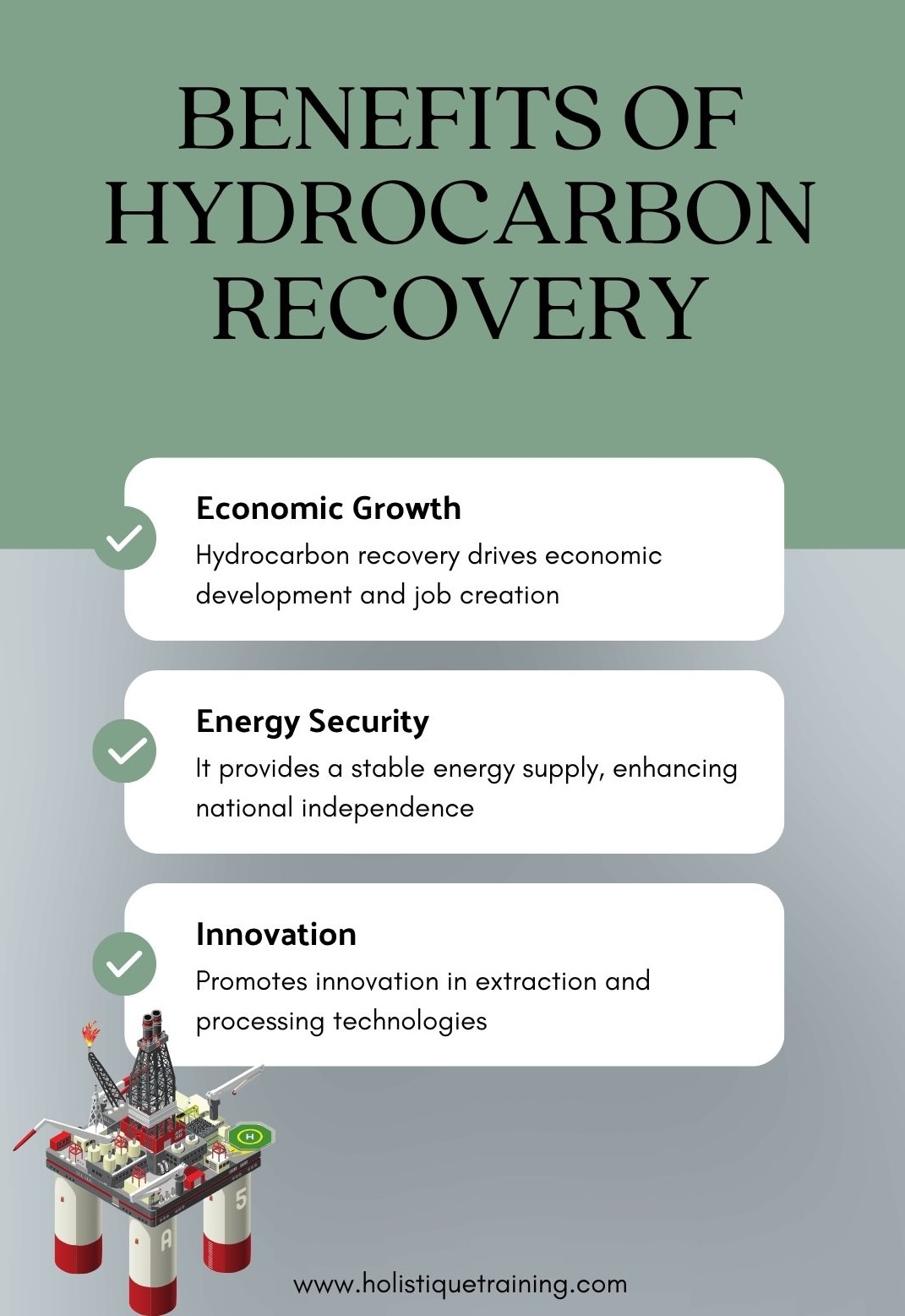- Table of Contents
- Introduction
- What is Gas Lift?
- Mechanism of Gas Lift
- When to Use a Gas Lift
- 1. High Water Cut
- 2. Low Reservoir Pressure
- 3. Depleted Reservoirs
- 4. Deep Wells
- 5. Variable Production Rates
- 6. Heavy Oil Production
- 7. Economic Considerations
- Why is Gas Lift Important?
- 1. Increased Production Rates
- 2. Cost-Effectiveness
- 3. Flexibility and Adaptability
- 4. Extended Well Life
- 5. Improved Recovery from Depleted Reservoirs
- 6. Environmental Benefits
- 7. Enhanced Reservoir Management
- 8. Compatibility with Other Technologies
- Gas Lift vs. Other Lift Systems: What Are the Differences?
- 1. Rod Pumping:
- 2. Electric Submersible Pumps (ESP):
- 3. Progressive Cavity Pumps (PCP):
- 4. Plunger Lift:
- What is Natural Flow?
- Characteristics of Natural Flow
- Why is Natural Flow Important?
- 1. Cost Efficiency
- 2. Maximizing Recovery Rates
- 3. Minimizing Reservoir Damage
- 4. Simplified Operations
- 5. Environmental Considerations
- 6. Sustainability of Production
- 7. Enhanced Understanding of Reservoir Dynamics
- 8. Economic Viability of Marginal Wells
- Comparison Between Natural Flow and Gas Lift
- 1. Efficiency:
- 2. Cost:
- 3. Production Longevity:
- 4. Flexibility:
- 5. Environmental Impact:
- What to Consider Before Making a Decision
- 1. Reservoir Characteristics
- 2. Production Goals
- 3. Economic Factors
- 4. Operational Complexity
- 5. Environmental Considerations
- 6. Flexibility and Adaptability
- 7. Technical Expertise
- Conclusion
Introduction
The oil and gas industry is a complex realm that employs various technologies and methods to extract hydrocarbons efficiently. Among these methods, gas lift and natural flow stand out as pivotal techniques for enhancing production. This blog post delves into the intricacies of gas lift and natural flow, exploring their mechanisms, applications, and significance in the oil and gas sector. By the end of this discussion, readers will have a comprehensive understanding of these two essential concepts, their differences, and the considerations that must be taken into account when selecting a lifting method.
What is Gas Lift?
Gas lift is an artificial lift method used to enhance the flow of oil and gas from wells. This technique involves injecting gas into the production tubing of a well, which reduces the density of the fluid column and allows the hydrocarbons to flow more easily to the surface. The injected gas mixes with the liquid, creating a lighter fluid that requires less pressure to lift.
Mechanism of Gas Lift
The gas lift process can be broken down into several key components:
- Injection of Gas: Gas, typically natural gas, is injected into the well through a gas lift mandrel located at specific intervals along the production tubing. The amount and pressure of the gas are carefully controlled to optimize performance.
- Fluid Expansion: As the gas mixes with the liquid hydrocarbons, it causes the fluid to expand. This expansion decreases the overall density of the fluid column, making it easier for the fluids to rise to the surface.
- Pressure Reduction: The reduction in fluid density lowers the hydrostatic pressure at the bottom of the well, allowing the natural reservoir pressure to push the hydrocarbons upward.
- Flow Enhancement: The combined effect of reduced density and pressure results in an increased flow rate of oil and gas to the surface.
Gas lift systems can be categorized into two types: continuous gas lift and intermittent gas lift. Continuous gas lift involves a steady injection of gas, while intermittent gas lift uses pulsations to optimize flow. The choice between these methods depends on the specific conditions of the well and the reservoir.
When to Use a Gas Lift
Gas lift is a versatile artificial lift method that can be employed in various scenarios to enhance oil and gas production. Understanding when to use gas lift is crucial for optimizing recovery and ensuring the economic viability of well operations. Here are some key situations where gas lift is particularly beneficial:
1. High Water Cut
In many oil and gas wells, especially as they age, the production of water alongside hydrocarbons increases, leading to a high water cut. This situation can complicate production, as the increased density of the fluid column makes it more challenging to lift the hydrocarbons to the surface. Gas lift can effectively mitigate this issue by injecting gas into the production tubing, which reduces the overall density of the fluid mixture. This reduction allows for easier lifting of both oil and water, helping to maintain production rates and improve overall efficiency.
2. Low Reservoir Pressure
Reservoir pressure is a critical factor in determining the flow of hydrocarbons to the surface. In cases where the natural pressure of the reservoir is insufficient to push the fluids upward—often seen in mature or depleted reservoirs—gas lift becomes an invaluable solution. By injecting gas, operators can artificially lower the hydrostatic pressure in the wellbore, allowing the natural gas and oil to flow more freely. This method is particularly useful in enhancing production from wells that would otherwise experience declining output due to low reservoir pressure.
3. Depleted Reservoirs
As reservoirs deplete over time, the natural drive mechanisms that once facilitated production may diminish significantly. Gas lift can be employed as a secondary recovery method to enhance oil recovery from these depleted reservoirs. By introducing gas into the well, operators can revitalize production, extending the productive life of the well and maximizing the amount of hydrocarbons extracted. This approach is especially relevant in fields where primary recovery methods have been exhausted.
4. Deep Wells
Deep wells present unique challenges due to the high hydrostatic pressure exerted by the column of fluid. In such cases, the weight of the fluid can hinder the natural flow of hydrocarbons to the surface. Gas lift systems are particularly effective in deep wells because they can significantly reduce the load on the wellbore by decreasing the density of the fluid mixture. This reduction allows the natural reservoir pressure to overcome the hydrostatic pressure more easily, facilitating efficient production.
5. Variable Production Rates
Oil and gas production is often subject to fluctuations due to changes in reservoir conditions, operational adjustments, or market demands. Gas lift systems offer a level of flexibility that can accommodate these variations. By adjusting the amount and pressure of the injected gas, operators can optimize the flow rate of hydrocarbons to match production targets. This adaptability is particularly advantageous in dynamic environments where production levels can change rapidly.
6. Heavy Oil Production
In wells producing heavy or viscous oils, the natural flow may be insufficient to bring the hydrocarbons to the surface efficiently. Gas lift can help overcome the high viscosity by reducing the density of the fluid column, enabling the flow of heavier oils. This application is particularly beneficial in fields where heavy oil is prevalent, allowing for enhanced recovery and improved production rates.
7. Economic Considerations
The economic viability of a gas lift system should also be considered. While gas lift systems require investment in infrastructure and ongoing operational costs, they can be justified in scenarios where they significantly enhance production and recovery rates. A cost-benefit analysis can help determine whether the potential increase in production justifies the investment in gas lift technology.
In short, gas lift is a powerful tool in the oil and gas industry, particularly suited for a range of challenging production scenarios. By understanding when to implement gas lift—such as in cases of high water cut, low reservoir pressure, depleted reservoirs, deep wells, variable production rates, heavy oil production, and economic considerations—operators can optimize their extraction processes and maximize the recovery of valuable hydrocarbons. This strategic application of gas lift technology not only enhances production efficiency but also contributes to the overall sustainability of oil and gas operations.
Why is Gas Lift Important?
Gas lift plays a critical role in the oil and gas sector, serving as a key technology for enhancing production efficiency and optimizing hydrocarbon recovery. Its importance can be attributed to several factors that collectively contribute to improved operational performance and economic viability. Here’s a deeper exploration of why gas lift is important:
1. Increased Production Rates
One of the most significant advantages of gas lift is its ability to boost production rates from wells. By injecting gas into the production tubing, gas lift reduces the density of the fluid column, allowing hydrocarbons to flow more freely to the surface. This capability is particularly essential in wells experiencing declining production due to low reservoir pressure or high water cut. The enhanced flow results in increased output, which is vital for maximizing the economic returns from oil and gas operations.
2. Cost-Effectiveness
Gas lift systems can be more cost-effective compared to other artificial lift methods. While initial installation may require capital investment, the ongoing operational costs are often lower than those associated with electric submersible pumps (ESPs) or rod pumping systems. Gas lift requires less maintenance and can be operated efficiently with minimal energy input, making it an economical choice, especially in mature fields where production costs need to be carefully managed.
3. Flexibility and Adaptability
The flexibility of gas lift systems is another critical factor in their importance. Gas lift can be easily adjusted to accommodate changes in production rates, reservoir conditions, and operational strategies. For instance, operators can modify the gas injection rates and pressures to optimize flow based on real-time production data. This adaptability is crucial in dynamic environments where production levels can fluctuate due to varying reservoir pressures, fluid characteristics, or market demands.
4. Extended Well Life
Gas lift systems can significantly extend the productive life of a well. As reservoirs age and natural pressures decline, gas lift can be employed to maintain or even increase production levels. This prolongation not only maximizes the recovery of hydrocarbons but also enhances the overall return on investment for operators. By utilizing gas lift in conjunction with otherenhanced oil recovery (EOR) techniques, operators can effectively manage reservoir depletion and sustain production over longer periods.
5. Improved Recovery from Depleted Reservoirs
In many cases, gas lift is essential for revitalizing production from depleted reservoirs. As natural pressure diminishes, the ability to bring hydrocarbons to the surface becomes increasingly challenging. Gas lift provides a means to overcome these challenges by artificially reducing the hydrostatic pressure in the wellbore. This technology enables operators to extract additional volumes of oil and gas that would otherwise remain unrecovered, thus maximizing the overall recovery factor of the reservoir.
6. Environmental Benefits
Gas lift can contribute to reducing the environmental impact of oil and gas production. By enhancing production efficiency, gas lift can lead to lower greenhouse gas emissions per unit of oil or gas produced. Additionally, the ability to optimize recovery from existing wells can reduce the need for new drilling operations, which can have a more significant environmental footprint. As the industry increasingly focuses on sustainability, gas lift’s role in improving efficiency aligns with broader environmental goals.
7. Enhanced Reservoir Management
Effective reservoir management is crucial for optimizing hydrocarbon recovery and ensuring the long-term sustainability of oil and gas operations. Gas lift provides operators with valuable data and insights into reservoir behavior, helping them make informed decisions about production strategies. By closely monitoring the performance of gas lift systems, operators can better understand reservoir dynamics, fluid characteristics, and pressure changes, leading to more effective management practices.
8. Compatibility with Other Technologies
Gas lift is often used in conjunction with other production technologies, enhancing its overall importance. For example, it can be integrated withwater injection systems or other enhanced oil recovery methods to optimize production. This compatibility allows operators to develop comprehensive production strategies that leverage the strengths of various technologies, ultimately leading to improved recovery rates and operational efficiency.
The importance of gas lift in theoil and gas sector cannot be overstated. Its ability to increase production rates, reduce operational costs, provide flexibility, extend well life, improve recovery from depleted reservoirs, and contribute to environmental sustainability makes it an invaluable tool for operators. As the industry faces challenges related to declining reserves and the need for more efficient production methods, gas lift will continue to play a pivotal role in maximizing hydrocarbon recovery and ensuring the economic viability of oil and gas operations.

Gas Lift vs. Other Lift Systems: What Are the Differences?
Gas lift is just one of several artificial lift methods available in the oil and gas industry. Understanding the differences between gas lift and other systems is essential for making informed decisions about production strategies.
1. Rod Pumping:
Rod pumping, or beam pumping, uses a mechanical rod to lift fluids to the surface. This method is effective in shallow to medium-depth wells but may struggle in deeper wells due to increased hydrostatic pressure.
2. Electric Submersible Pumps (ESP):
ESP systems use electric motors to drive pumps submerged in the well. They are highly efficient and suitable for high-production wells but require significant upfront investment and maintenance.
3. Progressive Cavity Pumps (PCP):
PCPs utilize a helical rotor to lift fluids. They are versatile and can handle varying fluid compositions but may have limitations in high-viscosity applications.
4. Plunger Lift:
Plunger lift systems use a plunger to create a vacuum that lifts fluids to the surface. They are effective in low-production wells but require regular maintenance.
Each of these methods has its advantages and disadvantages, and the choice of lifting system depends on factors such as well depth, fluid characteristics, and economic considerations.
Feature | Gas Lift | Rod Pumping | Electric Submersible Pumps (ESP) | Progressive Cavity Pumps (PCP) | Plunger Lift |
Mechanism | Gas injection to reduce density | Mechanical rod system | Submersible electric pumps | Helical rotor | Plunger creates vacuum |
Depth Capability | Deep wells | Shallow to medium-depth | Very deep wells | Medium to deep wells | Shallow to medium-depth |
Production Rate | High | Moderate | High | Variable | Low to Moderate |
Initial Cost | Moderate to High | Low | High | Moderate | Low |
Maintenance | Moderate | Regular maintenance required | Complex and costly | Moderate | Low |
Flexibility | High | Low | Moderate | Moderate | Moderate |
Fluid Compatibility | Best for gas and oil mixtures | Low-viscosity fluids | Viscous fluids | Viscous and multiphase fluids | Varies with fluid composition |
Environmental Impact | Lower emissions per unit produced | Moderate | Higher energy consumption | Moderate | Lower |
What is Natural Flow?
Natural flow refers to the process of hydrocarbons flowing to the surface without the assistance of artificial lift systems. This phenomenon occurs due to the natural pressure within the reservoir, which pushes the oil and gas through the wellbore and into the production system.
Characteristics of Natural Flow
Natural flow is characterized by several key features:
- Reservoir Pressure: The primary driver of natural flow is the pressure gradient within the reservoir. As long as the reservoir pressure exceeds the hydrostatic pressure of the fluid column, natural flow can occur.
- Fluid Properties: The viscosity and density of the produced fluids play a significant role in determining the ease of flow. Lighter, less viscous fluids tend to flow more readily compared to heavier counterparts.
- Wellbore Configuration: The design and integrity of the wellbore, including its diameter and any potential obstructions, can impact the flow efficiency.
Why is Natural Flow Important?
Natural flow refers to the movement of hydrocarbons from a reservoir to the surface without the assistance of artificial lift systems. This process is driven primarily by the natural pressure within the reservoir, which can be influenced by several factors, including gas drive, water drive, and solution gas drive. Understanding the significance of natural flow is essential for optimizing production strategies and maximizing hydrocarbon recovery. Here are some key reasons why natural flow is important:
1. Cost Efficiency
Natural flow is often the most cost-effective method of production, as it does not require the installation or operation of artificial lift systems. By relying on the natural pressure of the reservoir, operators can minimize capital expenditures and operating costs associated with mechanical equipment, maintenance, and energy consumption. This efficiency is particularly beneficial in the early stages of a well’s life when reservoir pressure is typically higher.
2. Maximizing Recovery Rates
In many cases, natural flow can facilitate higher initial production rates. When a well is first drilled, the natural pressure can drive hydrocarbons to the surface effectively, allowing for significant volumes of oil and gas to be produced without additional lifting mechanisms. This initial surge in production can be crucial for recouping investment costs and maximizing the return on investment.
3. Minimizing Reservoir Damage
Utilizing natural flow can help preserve reservoir integrity and minimize damage to the formation. Artificial lift methods can sometimes alter the pressure dynamics within the reservoir, potentially leading to issues such as formation collapse or increased water encroachment. By allowing natural flow to occur, operators can maintain a more stable reservoir environment, which is essential for long-term production sustainability.
4. Simplified Operations
Natural flow systems are generally simpler to operate compared to those requiring artificial lifting mechanisms. This simplicity can lead to reduced operational complexities, lower chances of equipment failure, and decreased maintenance requirements. Operators can focus on monitoring reservoir conditions and production rates without the added burden of managing complex lift systems.
5. Environmental Considerations
Natural flow can have a lower environmental impact compared to artificial lift methods. The absence of mechanical systems reduces energy consumption and emissions associated with power generation and equipment operation. Additionally, minimizing the use of artificial lifts can decrease the risk of spills or leaks that may occur during the handling of lifting equipment.
6. Sustainability of Production
Natural flow is often more sustainable in the long term, especially in reservoirs with favorable conditions for maintaining pressure. As reservoir pressure decreases over time, operators can transition to artificial lift systems if necessary, but the initial reliance on natural flow can prolong the productive life of the well. This sustainability is crucial for maximizing hydrocarbon recovery and ensuring that resources are utilized efficiently.
7. Enhanced Understanding of Reservoir Dynamics
Relying on natural flow allows operators to gather valuable data about reservoir behavior and performance. Observing how hydrocarbons naturally migrate to the surface can provide insights into fluid properties, reservoir pressure, and potentialchallenges that may arise in the future. This understanding can inform better decision-making regarding production strategies and reservoir management.
8. Economic Viability of Marginal Wells
For marginal wells, where production rates may be low and operational costs need to be minimized, natural flow can be particularly important. These wells may not justify the expense of installing artificial lift systems, making natural flow a viable option for maintaining production. By leveraging natural pressure, operators can continue to extract hydrocarbons from these wells without incurring excessive costs.
In summary, natural flow is a fundamental aspect of hydrocarbon production that offers numerous advantages, including cost efficiency, maximized recovery rates, reduced reservoir damage, simplified operations, and lower environmental impact. By understanding the importance of natural flow, operators can make informed decisions that optimize production strategies, enhance reservoir management, and ensure the long-term sustainability of oil and gas operations. As the industry continues to evolve, recognizing the value of natural flow will remain critical for maximizing resource recovery and maintaining economic viability.
Comparison Between Natural Flow and Gas Lift
When comparing natural flow and gas lift, several factors come into play:
1. Efficiency:
Natural flow is often more efficient in the early stages of production when reservoir pressure is high. However, as pressure declines, gas lift becomes increasingly important to maintain production levels.
2. Cost:
Natural flow is generally less expensive since it does not require additional equipment or energy inputs. Gas lift, while cost-effective in many scenarios, does incur operational costs related to gas injection and system maintenance.
3. Production Longevity:
Natural flow can provide high initial production rates, but gas lift systems are essential for extending the productive life of a well as reservoir conditions change.
4. Flexibility:
Gas lift systems offer greater flexibility in adjusting to varying production conditions, making them suitable for wells with fluctuating output.
5. Environmental Impact:
Both methods have environmental implications, but gas lift systems can be designed to minimize emissions and enhance overall efficiency.
Feature | Natural Flow | Gas Lift |
Mechanism of Operation | Relies on reservoir pressure | Injects gas to reduce fluid density |
Production Rates | High initial rates; declines over time | Can sustain or increase production rates |
Cost Considerations | Generally low initial costs | Higher initial and operational costs |
Operational Complexity | Simple operation | More complex; requires monitoring and management |
Reservoir Impact | Minimal disruption | Can alter reservoir pressure dynamics |
Flexibility and Adaptability | Less flexible; dependent on reservoir conditions | Highly adaptable; adjustable gas injection |
Environmental Impact | Lower impact | Potentially higher emissions depending on gas source |
What to Consider Before Making a Decision
When determining the most suitable method for hydrocarbon extraction, operators must carefully evaluate various factors that can significantly impact production efficiency, costs, and overall project viability. Making an informed decision requires a thorough analysis of the following considerations:
1. Reservoir Characteristics
- Pressure and Composition: Understanding the reservoir pressure, fluid composition (oil, gas, water), and phase behavior is crucial. Higher reservoir pressures may favor natural flow, while lower pressures might necessitate artificial lift methods like gas lift.
- Depth and Geometry: The depth of the well and the geological structure can influence the choice of lifting method. Deeper wells often require more sophisticated lifting systems due to increased hydrostatic pressure.
2. Production Goals
- Initial Production Rates: If rapid initial production is a priority, natural flow may be advantageous. However, if sustained production over time is the goal, gas lift might be more appropriate, especially in declining wells.
- Long-Term Recovery: Consider the overall recovery strategy. Gas lift can enhance recovery from mature wells, while natural flow may be sufficient for new wells with high initial pressures.
3. Economic Factors
- Cost Analysis: Evaluate the initial capital investment and ongoing operational costs for each method. Natural flow typically incurs lower costs, but gas lift may offer better long-term returns in certain scenarios.
- Return on Investment (ROI): Analyze the potentialROI for each method based on expected production rates, operational expenditures, and market conditions. This analysis should include sensitivity to changing oil and gas prices.
4. Operational Complexity
- Ease of Implementation: Assess the complexity of installing and operating each system. Natural flow is simpler and requires less equipment, while gas lift necessitates additional infrastructure and monitoring.
- Maintenance Requirements: Consider the maintenance demands of each method. Gas lift systems may require more frequent monitoring and maintenance, whereas natural flow systems are generally more straightforward.
5. Environmental Considerations
- Impact Assessment: Evaluate the environmental implications of each method. Natural flow typically has a lower environmental impact due to minimal equipment and energy use, while gas lift may increase emissions depending on the gas source.
- Regulatory Compliance: Ensure that the chosen method complies with local regulations and environmental standards. This may influence the feasibility of implementing certain lift systems.
6. Flexibility and Adaptability
- Response to Changing Conditions: Consider how each method can adapt to changing reservoir conditions over time. Gas lift systems can be adjusted in real-time based on production data, while natural flow is less flexible once reservoir pressure declines.
- Future Development Plans: If there are plans for future development or enhanced recovery techniques, consider how the chosen method aligns with these strategies. Gas lift may facilitate easier transitions to other enhanced oil recovery methods.
7. Technical Expertise
- Skill Set and Experience: Assess the technical expertise available within the team. Gas lift systems may require specialized knowledge for design, operation, and troubleshooting, while natural flow systems are generally easier to manage.
- Training and Support: Consider the need fortraining staff on the chosen method. Ensuring that personnel are adequately trained can significantly impact operational efficiency and safety.
To sum up, before making a decision on the most suitable hydrocarbon extraction method, operators must evaluate a range of factors, including reservoir characteristics, production goals, economic considerations, operational complexity, environmental impact, flexibility, and technical expertise. By conducting a comprehensive analysis of these elements, operators can make informed decisions that optimize production strategies, enhance recovery rates, and ensure the long-term viability of oil and gas operations. This strategic approach will ultimately lead to better resource management and improved financial performance in the competitive energy market.
Conclusion
Gas lift and natural flow are two critical concepts in the oil and gas sector, each with its unique advantages and applications. While natural flow capitalizes on the inherent pressure within a reservoir, gas lift provides a vital solution for enhancing production in challenging conditions. Understanding the differences between these methods and their respective benefits is essential for operators seeking to optimize hydrocarbon recovery.
As the industry continues to evolve, the choice between gas lift and natural flow will depend on a multitude of factors, including reservoir characteristics, economic considerations, and environmental impacts. By carefully evaluating these elements, operators can make informed decisions that maximize production efficiency and ensure the long-term sustainability of their operations.
To further enhance your understanding and application of these concepts, consider enrolling in our course, "Hydrocarbon Measuring: Best Practices." This course offers in-depth insights into measurement techniques, industry standards, and best practices that can help you effectively manage and optimize hydrocarbon production. By gaining expertise in these areas, you will be better equipped to implement the most effective extraction methods and contribute to the success of your operations.

























